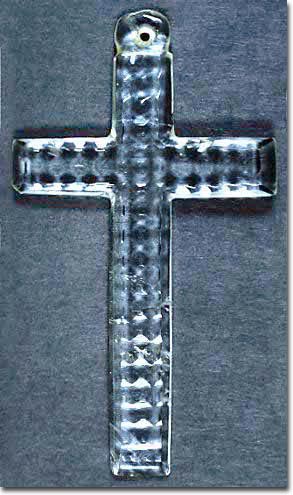|
The Mission San Luis de Apalachee was the capital of the Spanish mission chain in western Florida from 1656 to 1704. Though one of more than 100 mission settlements established in Spanish Florida during the sixteenth and seventeenth centuries, Mission San Luis was second in importance only to St. Augustine. The mission town, the remains of which can be found in Tallahassee, was founded, like other missions, in order to Christianize the natives and help bring them under the control of the Spanish. However, San Luis was not only home to friars, but also to a deputy governor and garrison, Spanish civilians, and more than 1400 Apalachee Indians. Most of the Spanish inhabitants lived near the center of the site, comprising a community that is believed to have consisted of as many as 50 houses, which were rectangular in shape and featured thatched roofs and walls constructed with either wooden planks or wattle and daub, as they would have been in Spain. Since settlers did not all arrive at San Luis at the same time, the houses in the Spanish village were not laid out in an organized system, but were instead, as excavations have revealed, scattered more haphazardly about than in other similar communities, such as the Spanish settlement in St. Augustine. Evidence of outbuildings and corrals has also been discovered in this area of the mission site.

Carved Jet Higa
The Apalachee are purported to be the only Florida natives to have sought the presence of friars, but the garrison and Spanish settlers, to whom they were forced to pay a labor tribute, apparently arrived in their province unsolicited. No Apalachee houses for commoners have been found yet at San Luis, and it has been supposed that most of the native population associated with the mission lived in nearby farmsteads and hamlets. An Apalachee council house and a chief's house have, however, been identified along the edge of the central plaza at the site. Such findings emphasize the fact that despite the presence of the Spanish, the natives maintained most of their traditional political and cultural practices, with the main exception being their forced recognition of the sovereign of Spain and subordination to him as well as his appointed governors and deputy governors. Over 120 feet in diameter, the council house would have been central to the daily lives of the Apalachee, acting as a place for them to gather, socialize, dance, and carry out other activities. The structure, which was capable of holding 2,000 to 3,000 people, exhibited a large central hearth, about which two rows of concentric benches were placed, and niches in the walls that could be used as beds. The chief's house was similar in design, but somewhat smaller (about 70 feet in diameter), and featured only a single, rather than double, row of benches along the inner wall.
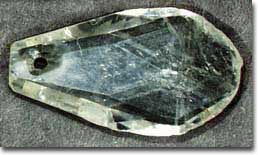
Quartz Crystal Pendant
San Luis' church was the center of Christian activity in Apalachee Province. It not only served the immediate population of the mission, but the church at San Luis was probably the preferred burial site of other high-ranking Christianized Apalachee natives. Part of a larger complex, the church was closely accompanied by a friary and a detached cocina, or kitchen, and was likely the one of the first structures built at the site after the Spanish arrived. According to one document, a stockade was supposed to be built around the friary and church, which was subsequently to have been extended from the religious complex to the fort, but archaeologists have not yet been able to determine whether or not the barrier was ever erected. Oriented in an east-west direction, the church itself extended about 110 feet long and 50 feet wide. The religious structure was built with plank walls and was topped with a thatched roof. Among the main structural features of the church, which evidence suggests was ornamented with religious works of art, were a nave, a sanctuary, and a choir loft.
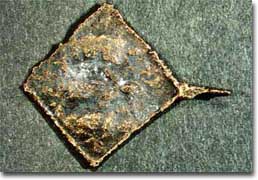
Small Bronze Medallion
Archeological findings that have been made at San Luis include a broad range of objects, including both imported and native-made pottery, weaponry, glass beads, pendants, metal artifacts, gun parts, and hardware. These items, as well as the large amount of domestic animal bones and food remains unearthed, are suggestive of the relative prosperity enjoyed by inhabitants of the mission community. Indeed, the fertility of the land was suitable for growing a number of desirable crops and commerce with Havana ensured access to imported goods. Unfortunately for the Spanish, the advantages of the location did not go unnoticed by other nations. The British were well known for their frequent raids on Florida missions and were aided in their efforts by the Creek Indians. These combined forces were able to inflict devastation on mission settlements, and often resulted in the death or enslavement of their opponents. Fear of an upcoming attack is what eventually led to the abandonment of San Luis. Before the Spanish and Apalachee left, however, they burned the buildings at the site so they would not be a benefit to their enemies, who arrived only two days after the evacuation on July 31, 1704.
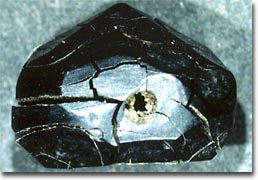
Faceted Jet Rosary Bead
Soon after the Spanish ceded Florida to the United States in 1819, San Luis was officially visited in order that records could be made of the ruins found there. Subsequently, part of the site became part of an extensive antebellum plantation, the ownership of which changed hands many times, and another section was utilized to establish a winery, though this was closed in 1904 when Leon County went dry. During the years between 1939 and 1983, the site served as the home of a prominent Tallahassee family, whom ensured that vandals did not disturb the archaeologically important area. The main house of the property came to serve as a visitor center to the site once it and 50 acres of surrounding land were purchased by the state of Florida in 1983. Excavations of San Luis have been carried out on an ongoing basis since that time, providing enough insight into the former mission settlement for the state, working in conjunction with the Department of State's Bureau of Archaeological Research and Museum of Florida History, to begin recreating the seventeenth century mission. The church, the chief's house, and the council house have already been rebuilt and San Luis now is in the process of developing a living history program. On October 22, 2000, the first formal Mass was carried out at Mission San Luis since 1704.
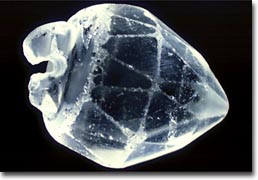
Faceted Quartz Pendant
Mission San Luis is a pristine resource for understanding the decline of a powerful Mississippian chiefdom and the effects of missionization on this native society. It also provides ideal conditions to evaluate Spanish colonial policy in the hinterland, and to explore the nature of Spanish-Indian relations over a period of several generations. In addition to its obvious historical significance as the administrative, military, social, and religious capital of the western mission chain in La Florida during the seventeenth century, San Luis presents a rare opportunity to examine acculturation from both the Spanish and Indian perspective. Indeed, San Luis is the only site known in Spanish Florida that contains sacred and secular elements of both Spanish and Indian societies in the same complex. The presence of the Apalachee council house and the Franciscan church at opposite ends of the central plaza offers unparalleled opportunities to observe cultural conservatism and change in both Indian and Spanish sectors of the population. Thus, it is important that the protection and careful excavation of Mission San Luis be carried on throughout the upcoming years, as there is still much left that can be learned from this archaeological treasure.
|
